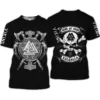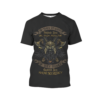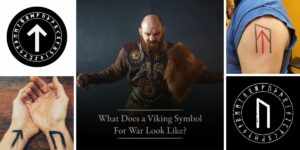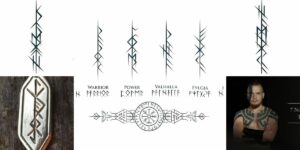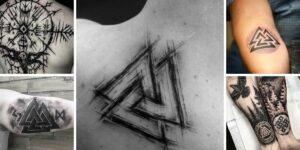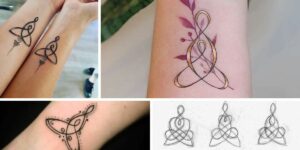Nordic runes are ancient symbols steeped in the rich history of Viking culture, serving as more than mere letters but as carriers of profound spiritual and practical significance. These enigmatic carvings, etched into stone, wood, or metal, were believed to hold magical properties, guiding warriors through the chaos of battle and connecting them to the divine. Among these, the Nordic rune for war stands out, embodying the strength, courage, and strategy of the Norse people. Runes like Tiwaz and Uruz, in particular, resonate with themes of war, justice, and primal energy, making them central to Viking martial traditions. This article explores the role of Nordic war runes, their meanings, and their modern-day applications, from spiritual practices to tattoos, offering a glimpse into their enduring legacy.
What Are Nordic War Runes?
Nordic war runes were integral to Viking society, serving as both a writing system and a conduit for mystical power. Used from the 2nd to the 11th centuries, runes were carved into runestones, weapons, and amulets, often invoking protection or victory in battle. The Norse rune for war was not merely decorative; it was believed to channel divine favour, ensuring success against enemies. Vikings used these symbols in rituals before combat, inscribing them on shields or blades to imbue them with strength or to honour gods like Odin and Tyr. The Elder Futhark, the oldest runic alphabet, contains several runes associated with war, each with distinct meanings. Understanding Viking runes and meanings reveals how these symbols shaped Norse warfare, blending spirituality with strategy, and how their influence persists in modern interpretations of Viking heritage.
Key Nordic Runes for War: Tiwaz and Uruz
Tiwaz Rune
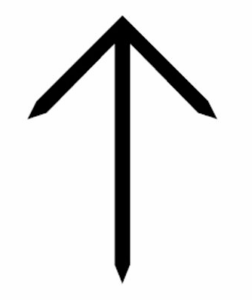
The Tiwaz rune, named after the Norse god Tyr, is perhaps the most iconic Norse rune of war. Shaped like an arrow pointing upward, it symbolises justice, sacrifice, and victory in battle. Tyr, the god of war and law, famously sacrificed his hand to bind the chaotic wolf Fenrir, embodying the warrior’s resolve. Vikings inscribed the Tiwaz rune on weapons and runestones to invoke Tyr’s protection and ensure triumph. Its historical use in battle rituals highlights its role as a beacon of honour and courage, guiding warriors through moral and physical conflicts.
Uruz Rune
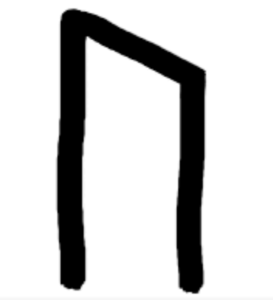
In contrast, the Uruz rune represents raw, untamed strength and endurance. Resembling an inverted U, it embodies the primal energy of the aurochs, a wild ox revered for its power. For Viking warriors, the Uruz rune signified physical prowess and resilience, qualities essential for survival in brutal combat. Often carved into amulets or armour, it was believed to bolster a warrior’s stamina and ferocity. Together, these runes encapsulate the duality of war—strategy and strength—making them enduring symbols of the Nordic rune for war.
Nordic Rune for War Meaning and Interpretation
The Nordic rune for war meaning extends beyond mere symbolism, reflecting the Vikings’ worldview. The Tiwaz rune was seen as a divine endorsement of justice in battle, aligning warriors with cosmic order. Its presence in inscriptions often marked a call for victory through honour, resonating with Tyr’s sacrificial nature. The Uruz rune, meanwhile, tapped into the primal instincts of survival, embodying the raw force needed to overcome adversaries. In modern spirituality, these runes are used in divination and meditation, with the Norse rune for war interpreted as a call to inner strength or moral clarity. Today, practitioners view these symbols as tools for personal empowerment, connecting modern seekers to the Viking ethos of resilience and purpose. Their layered meanings ensure their relevance in both historical and contemporary contexts.
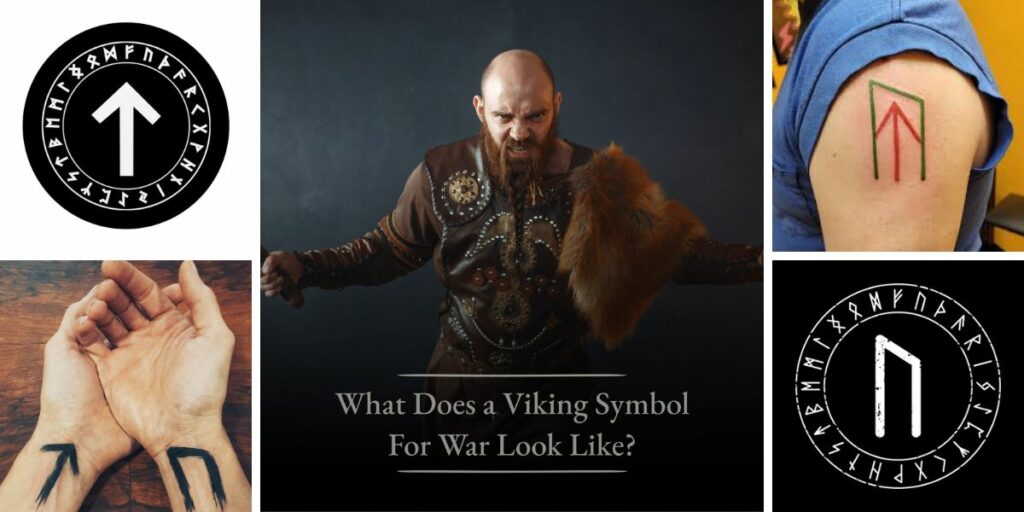
Nordic Rune for War Translator: How to Read War Runes
Translating Nordic war runes requires understanding both their historical context and modern tools. Historically, runes like Tiwaz and Uruz were inscribed with specific intentions, their meanings derived from their shape and the rituals surrounding them. Today, a Nordic rune for war translator can be a digital tool or app that converts runic inscriptions into Latin letters or interprets their symbolic meanings. For accurate readings, one must consider the rune’s position (upright or reversed) in divination practices, as this alters its interpretation—upright Tiwaz might signify victory, while reversed could warn of imbalance. Beginners can use resources like runic guides or online translators, but studying the Elder Futhark alphabet and its cultural context ensures deeper understanding. Engaging with these tools connects modern enthusiasts to the ancient art of runic interpretation.
Nordic Rune for War Tattoo: Symbolism and Ideas
The Nordic rune for war tattoo has surged in popularity, blending ancient symbolism with modern aesthetics. The Tiwaz rune, with its arrow-like form, is a striking choice, often inked on the forearm or chest to symbolise courage and justice. The Uruz rune, with its bold, angular shape, appeals to those seeking to embody strength and resilience, commonly placed on the shoulder or back. Designs may incorporate Viking motifs like ravens or axes, enhancing their cultural resonance. However, potential wearers should research thoroughly, respecting the runes’ sacred origins to avoid cultural appropriation. Consulting with tattoo artists familiar with Norse symbolism ensures authentic designs that honour the Nordic rune for war legacy while reflecting personal meaning.
Conclusion
Nordic war runes like Tiwaz and Uruz are more than ancient symbols; they are windows into the Viking spirit, embodying courage, justice, and primal strength. From battlefields to modern tattoos and spiritual practices, these runes continue to inspire awe and connection to Norse heritage. Their meanings, rooted in the divine and the warrior’s code, resonate across centuries, inviting us to explore their power further. Whether you’re drawn to the Nordic rune for war for its historical significance or its modern applications, delving into Viking history and runic symbolism offers a profound journey into a world where strength and honour reigned supreme.
Questions Around the Main Keyword (Nordic Rune for War)
-
What is the most powerful Nordic rune for war? The Tiwaz rune is often considered the most powerful, symbolising victory and justice through the god Tyr.
-
How did Vikings use runes in battle? Runes were inscribed on weapons and amulets to invoke divine protection and ensure success.
-
What does the Tiwaz rune symbolise in war? It represents honour, sacrifice, and triumph, linked to Tyr’s legacy.
-
Can Nordic war runes be used in modern tattoos? Yes, runes like Tiwaz and Uruz are popular for their bold designs and deep meanings.
-
How do you translate Nordic war runes today? Use runic guides or online translators, focusing on the Elder Futhark and contextual meanings.
Nordic Rune for Love: Symbols, Meanings & How to Use Them
Table of ContentsWhat Are Nordic War Runes?Key Nordic Runes for War: Tiwaz and UruzTiwaz RuneUruz
Jun
Nordic Rune for War: Powerful Viking Symbols of Strength and Victory
Table of ContentsWhat Are Nordic War Runes?Key Nordic Runes for War: Tiwaz and UruzTiwaz RuneUruz
Jul
Nordic Rune for Warrior: Symbols of Strength and Protection in Viking Culture
Table of ContentsWhat Are Nordic War Runes?Key Nordic Runes for War: Tiwaz and UruzTiwaz RuneUruz
Jul
Viking Symbols for Death: Exploring Norse Mythology’s Darkest Icons
Table of ContentsWhat Are Nordic War Runes?Key Nordic Runes for War: Tiwaz and UruzTiwaz RuneUruz
Jun
Nordic Symbol for Mother and Son: A Deep Dive into Meaning
Table of ContentsWhat Are Nordic War Runes?Key Nordic Runes for War: Tiwaz and UruzTiwaz RuneUruz
1 Comment
Jun
Norse Symbols for Death: Exploring Viking Runes, Deities, and Iconic Imagery
Table of ContentsWhat Are Nordic War Runes?Key Nordic Runes for War: Tiwaz and UruzTiwaz RuneUruz
Jul


